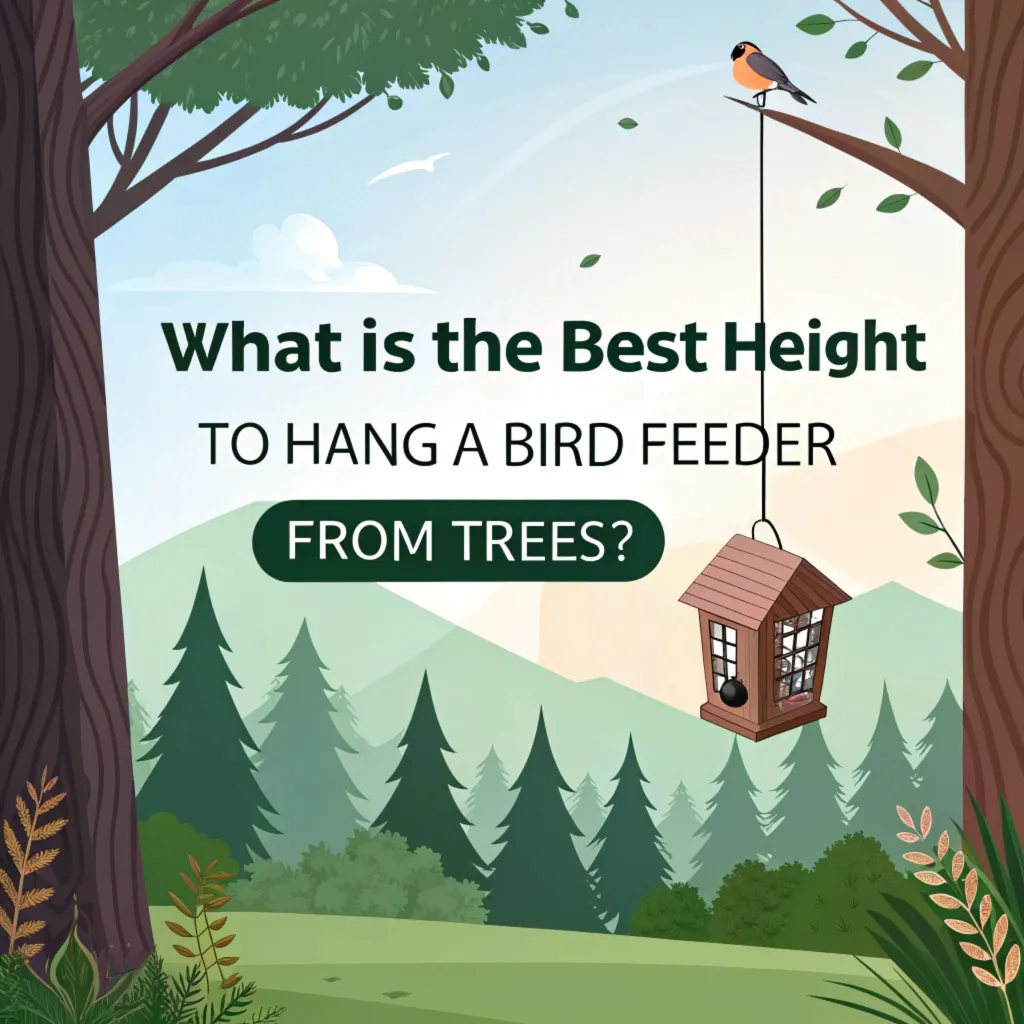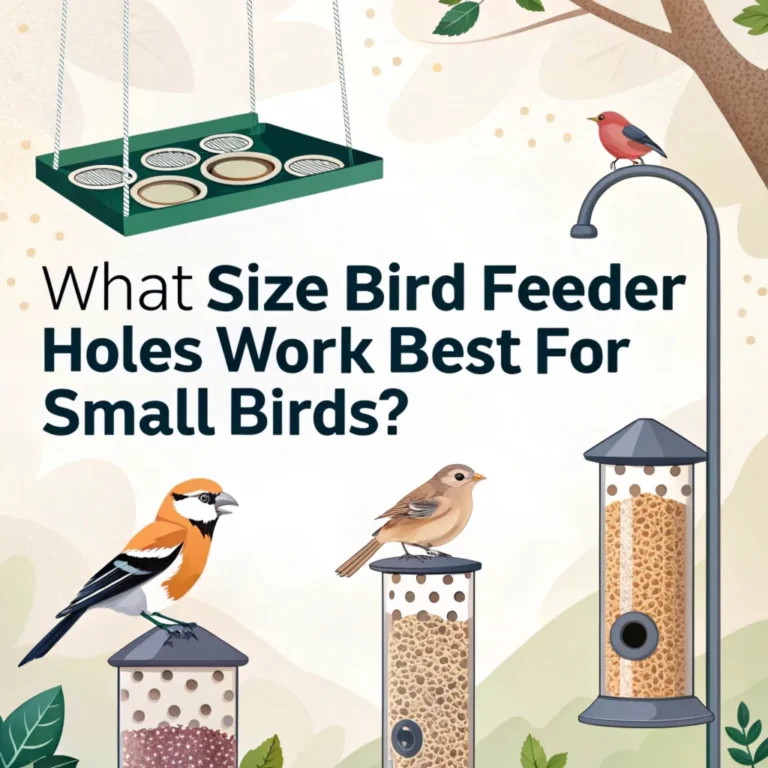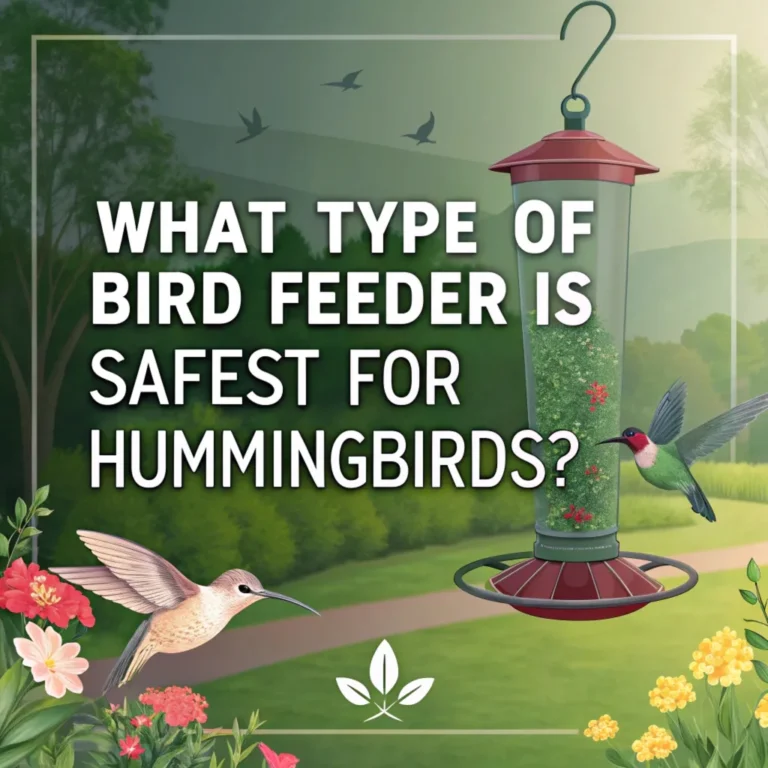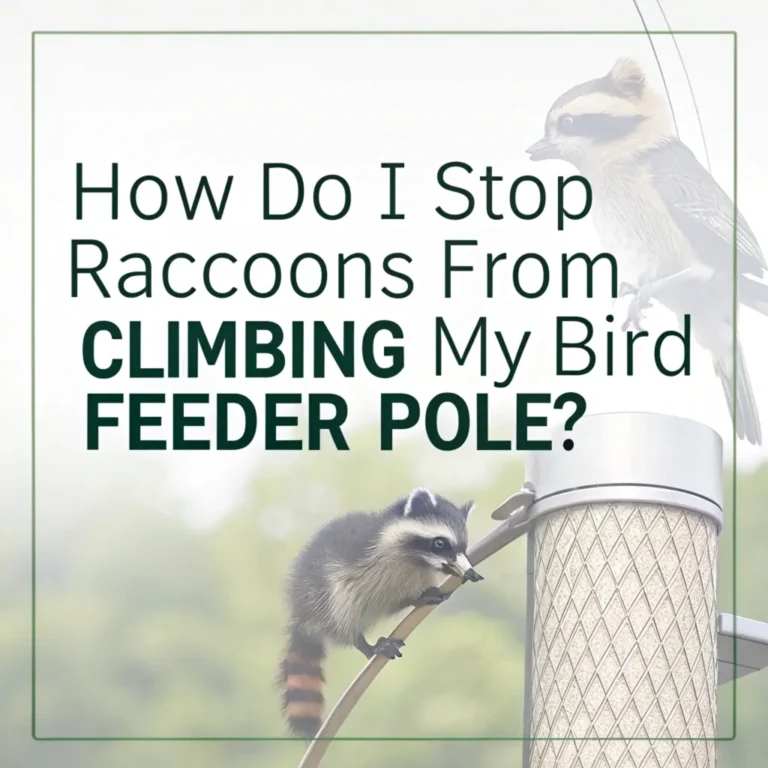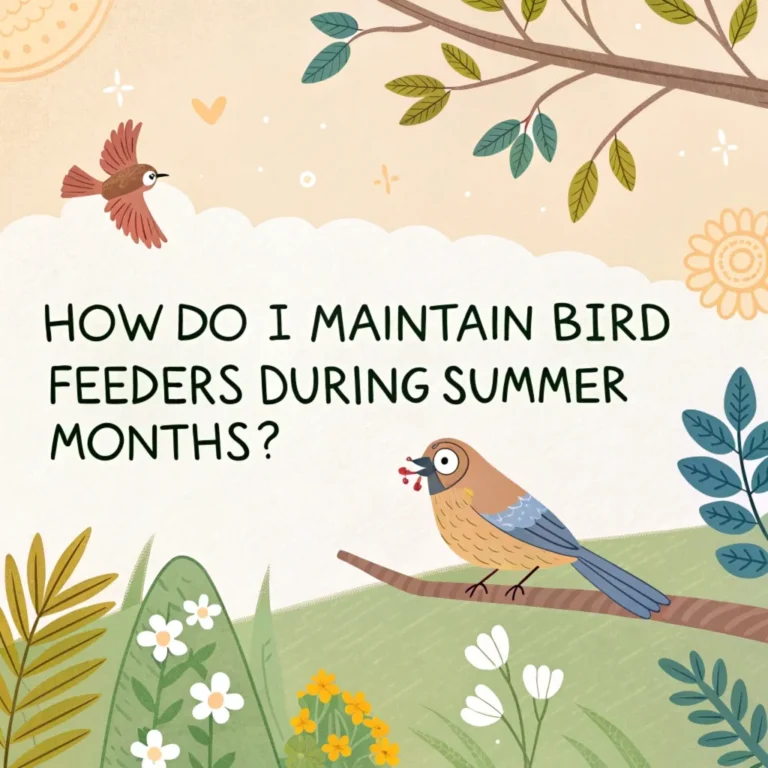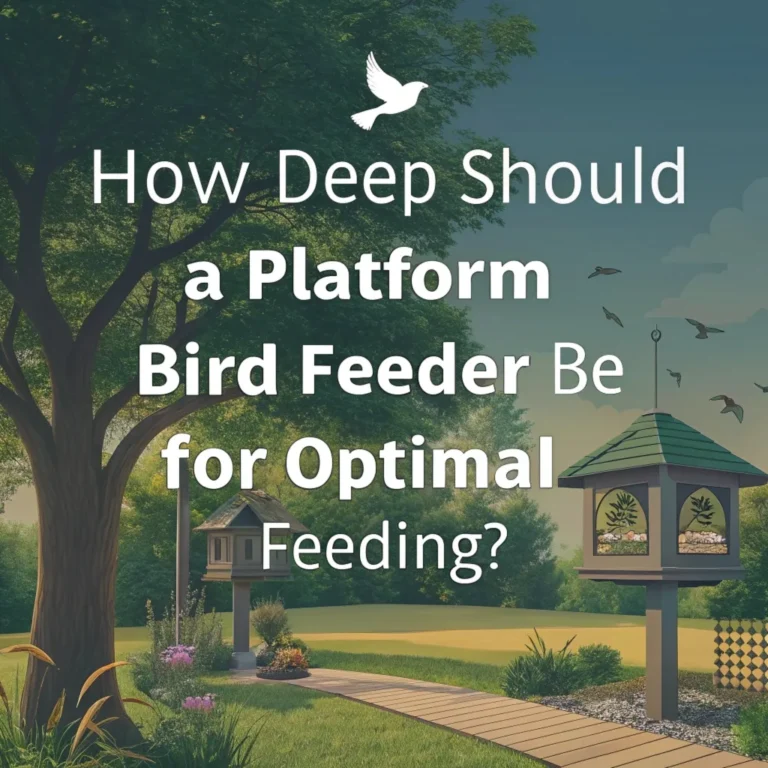What is the Best Height to Hang a Bird Feeder From Trees?
The height at which you hang a bird feeder from trees plays a key role in attracting birds to your yard.
This guide explores the best heights for different bird species, safety considerations, and practical tips for optimal feeder placement.
By understanding these factors, you can create an inviting space for a variety of feathered visitors.
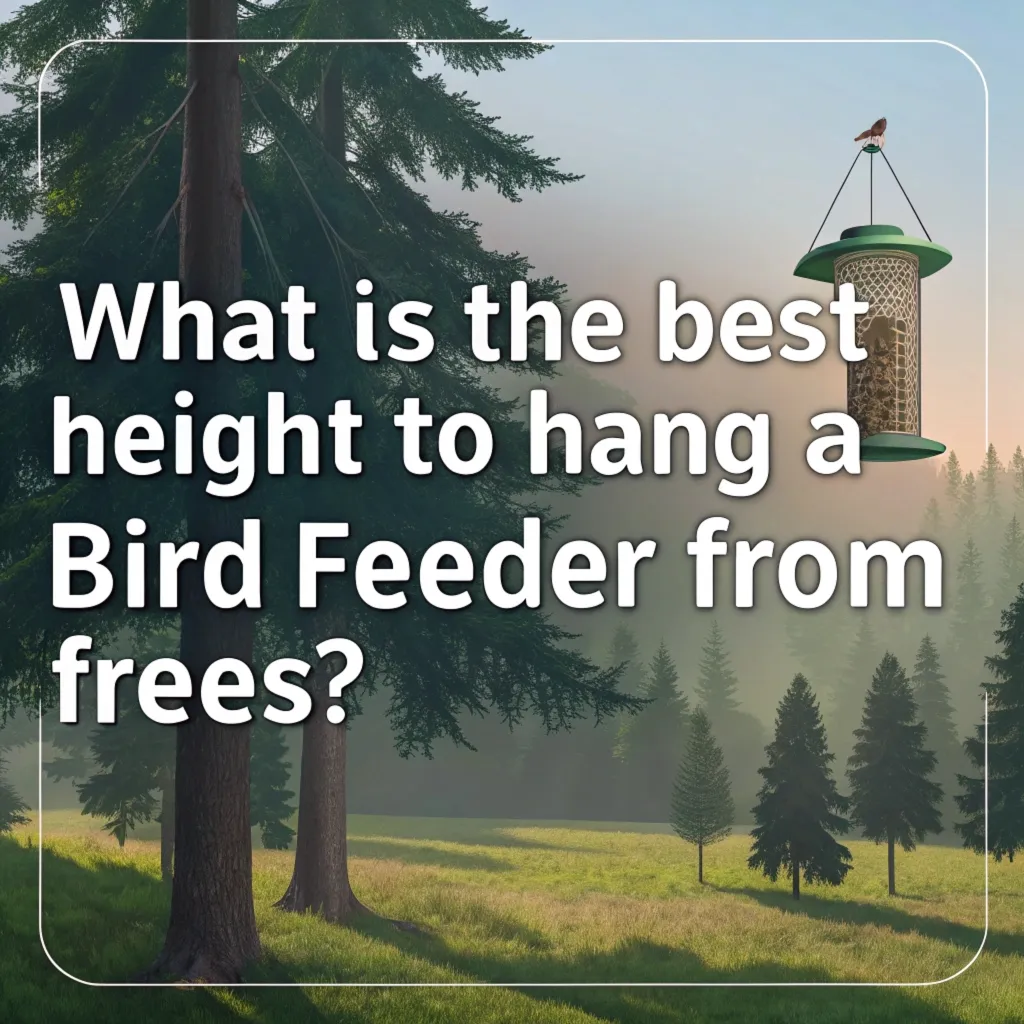
Key Takeaways
- The ideal height for most bird feeders is around 5 feet (1.5 meters) from the ground
- Different bird species prefer feeders at varying heights:
- Woodpeckers: 6-10 feet high
- Cardinals and finches: Eye level, about 5-6 feet
- Chickadees and titmice: 5-10 feet
- Hummingbirds: 3-6 feet
- Ground feeders (sparrows, towhees): 1-5 feet
- Safety is a key factor in determining feeder height
- Convenience for refilling and cleaning should be considered
- Multiple feeders at different heights can attract a wider variety of birds
- Proper placement near natural cover like trees and shrubs is essential
- Avoid hanging feeders too close to windows to prevent bird collisions
Understanding Bird Feeder Height Preferences
Different bird species have varying preferences for feeding heights. This diversity reflects their natural feeding habits in the wild. By understanding these preferences, you can optimize your bird feeder placement to attract a wide range of species.
The height at which birds feel comfortable feeding is influenced by several factors. These include their size, natural habitat, and feeding behaviors.
For example, ground-feeding birds like sparrows and doves prefer feeders closer to the ground, while tree-dwelling species such as woodpeckers are more comfortable at greater heights.
Observing wild birds in their natural habitats can provide valuable insights into their feeding preferences. Pay attention to where different species tend to forage and rest in trees and shrubs.
This knowledge can help you replicate these conditions with your feeder placement, creating a more inviting environment for a diverse array of birds.
The Ideal Height for Most Bird Feeders
The general consensus among bird experts is that the optimal height for hanging a bird feeder is approximately 5 feet (1.5 meters) from the ground. This height offers several advantages:
- It’s high enough to deter most ground-based predators
- It’s easily accessible for a wide variety of bird species
- It’s convenient for humans to refill and clean the feeder
While 5 feet is a good starting point, it’s important to remember that this is not a strict rule. The best height can vary depending on factors such as the types of birds in your area, the surrounding landscape, and the specific feeder design you’re using.
Experimenting with different heights can help you find the optimal position for your particular situation.
Start at 5 feet and observe the bird activity. If you’re not attracting the species you hope to see, try adjusting the height slightly up or down.
Height Preferences for Specific Bird Species
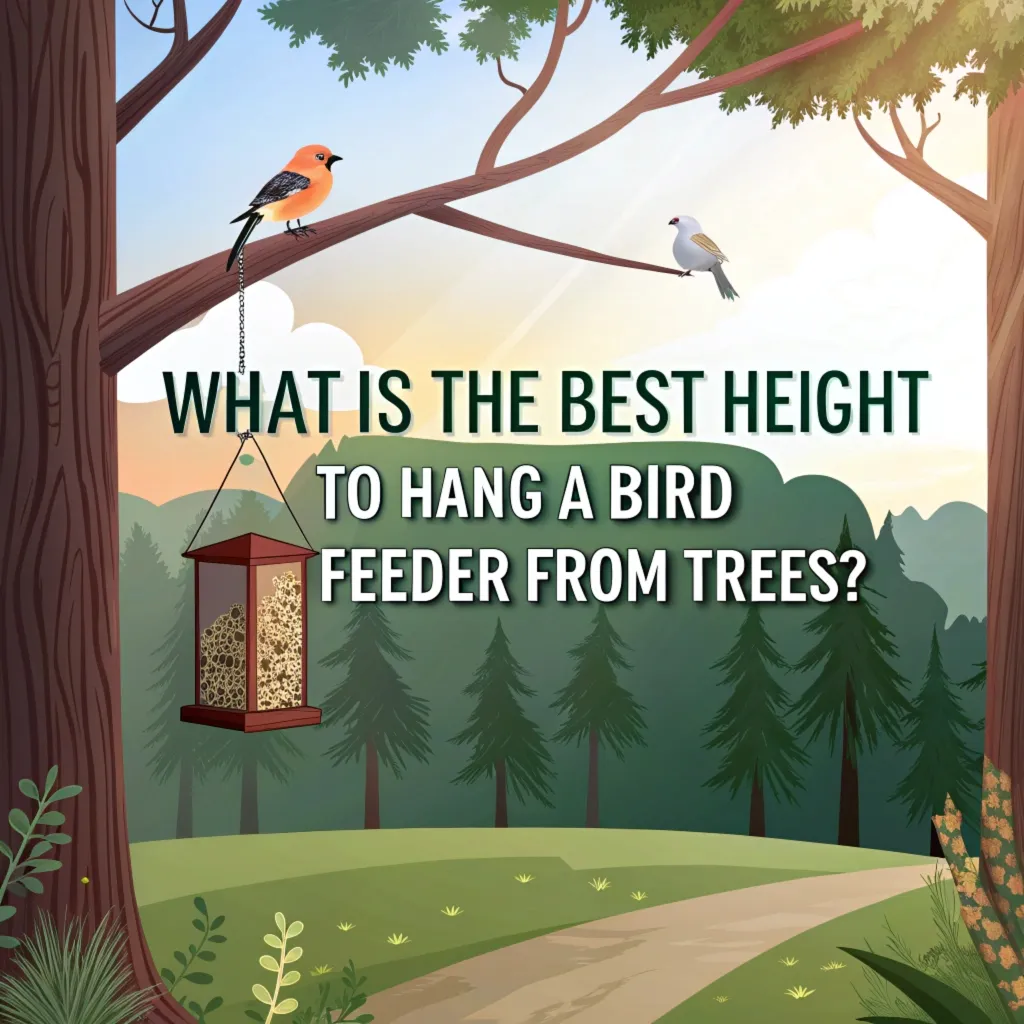
While the 5-foot rule works well for many birds, some species have distinct preferences:
- Woodpeckers: These tree-dwelling birds prefer feeders hung 6-10 feet high
- Cardinals and finches: They favor feeders at eye level, around 5-6 feet
- Chickadees and titmice: These mid-level tree feeders enjoy heights of 5-10 feet
- Hummingbirds: Prefer feeders hung 3-6 feet high, mimicking the height of flowering bushes and vines
- Ground feeders (sparrows, towhees): Comfortable with feeders 1-5 feet from the ground
Understanding these preferences can help you create a more welcoming environment for specific bird species.
If you’re hoping to attract a particular type of bird, adjusting your feeder height to match their natural feeding habits can significantly increase your chances of success.
It’s worth noting that many birds are adaptable and may use feeders at various heights if food is available.
However, providing options at their preferred heights can make your yard more attractive and comfortable for a wider range of species.
Safety Considerations for Bird Feeder Height
The height of your bird feeder plays a crucial role in protecting birds from predators. Hanging feeders at least 5 feet high can discourage many ground-based predators, such as cats and some dogs. However, it’s also important to consider other safety factors:
- Keep feeders away from bushes or shrubs that could conceal predators
- Avoid placing feeders too close to windows to prevent bird collisions
- Use baffles to deter squirrels and other climbing animals
Safety should always be a top priority when setting up bird feeders. While attracting birds is the goal, it’s equally important to ensure that your feeder doesn’t unintentionally put them at risk.
Consider the entire environment around your feeder, not just its height.
Remember that different predators pose different threats. While a 5-foot height might deter cats, it may not be sufficient for squirrels or raccoons. Assess the potential predators in your area and adjust your feeder setup accordingly.
Convenience and Accessibility
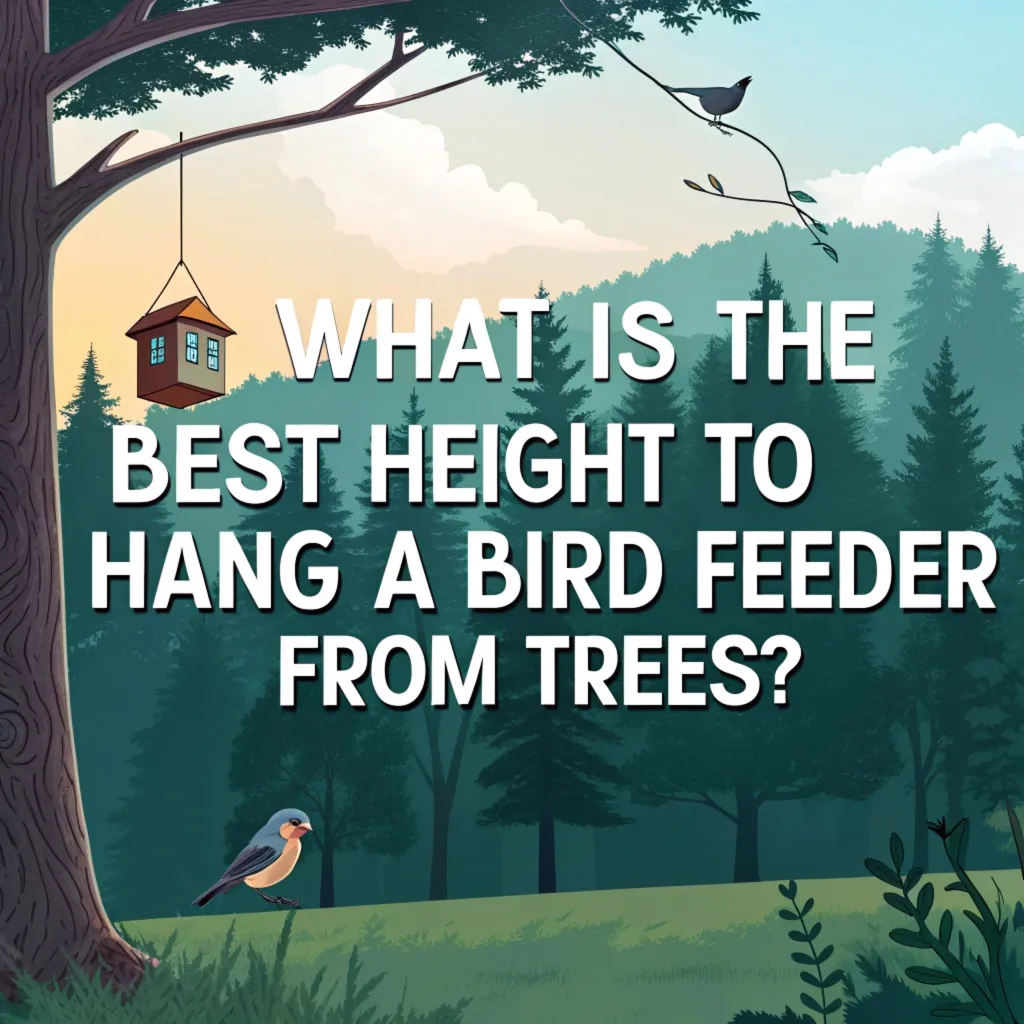
While attracting birds is the primary goal, you should also consider the practicality of maintaining your feeder.
The ideal height should allow you to easily refill and clean the feeder without requiring a ladder or special equipment. This is especially important during winter months when icy conditions can make tall feeders difficult to access.
Balancing bird preferences with human convenience is key to maintaining a successful feeding station.
If a feeder is too difficult to reach, you may be less likely to keep it clean and filled regularly, which can negatively impact the birds that rely on it.
Consider your own physical abilities and the tools you have available when choosing a height for your feeder. It’s better to have a slightly lower feeder that’s well-maintained than a higher one that’s neglected due to difficulty in accessing it.
Maximizing Bird Diversity with Multiple Feeders
To attract a wider variety of birds, consider hanging multiple feeders at different heights. This approach can:
- Accommodate the preferences of various bird species
- Reduce competition among birds for feeding spots
- Create a more dynamic and interesting bird-watching experience
Using multiple feeders at different heights can transform your backyard into a bustling bird sanctuary.
This strategy allows you to cater to the needs of various species simultaneously, creating a more inclusive feeding environment.
When setting up multiple feeders, consider not only the height but also the spacing between feeders.
Some birds are more territorial and may prefer having their own space, while others are more social and don’t mind feeding in close proximity to other birds.
Proper Placement Near Natural Cover
In addition to height, the location of your bird feeder is crucial. Place feeders near natural cover such as trees, shrubs, or other vegetation. This provides birds with:
- A safe retreat from potential predators
- Shelter while they wait for their turn to feed
- A more natural feeding environment
Proximity to natural cover can significantly increase the attractiveness of your feeder to birds. It provides them with a sense of security and mimics their natural feeding habits.
However, be careful not to place feeders too close to dense cover, as this can provide hiding spots for predators.
The ideal setup often involves placing feeders about 10-12 feet from a tree or large shrub. This distance allows birds to quickly retreat to safety if needed, while still providing enough open space for them to observe their surroundings while feeding.
Avoiding Window Collisions
To prevent fatal window collisions, which claim millions of bird lives annually, follow these guidelines:
- Hang feeders either closer than 3 feet or farther than 15 feet from windows
- Use window decals or other visual deterrents to make glass more visible to birds
Window collisions are a significant threat to birds, especially when feeders are placed in the “danger zone” of 3-15 feet from windows. At these distances, birds may not have enough time to react and avoid the window when startled.
If you must place a feeder within this range, consider using external window treatments such as screens, netting, or UV-reflective decals.
These can help break up reflections and make the glass more visible to birds, reducing the risk of collisions.
Adjusting Feeder Height for Best Results
Observe the birds visiting your feeder and be prepared to adjust the height if needed. If certain species aren’t visiting, try changing the height or adding feeders at different levels.
Remember, birds are adaptable and may use feeders at various heights, so don’t be afraid to experiment.
Flexibility is key when it comes to optimizing your bird feeding setup. What works best may change over time due to factors such as seasonal variations, changes in local bird populations, or alterations in the surrounding landscape.
Keep a journal of your observations, noting which species visit at different times of the year and how they respond to changes in feeder height. This information can help you fine-tune your setup over time, creating an increasingly attractive environment for a diverse range of birds.
Choosing the Right Hanging Method
When hanging your bird feeder from a tree, consider these options:
- Strong rope or chain
- S-hooks or carabiners
- Extendable hanging systems
Ensure your chosen method is sturdy enough to support the feeder when it’s full of seed and visited by multiple birds.
The hanging method you choose can impact both the safety of the birds and the longevity of your feeder setup.
Opt for materials that can withstand outdoor conditions and won’t degrade quickly when exposed to sun, rain, or temperature fluctuations.
Regularly inspect your hanging system for signs of wear or damage. Even the sturdiest materials can deteriorate over time, potentially putting birds at risk if a feeder were to fall. Replace any worn components promptly to maintain a safe feeding environment.
Maintaining Your Bird Feeder
Regardless of height, regular maintenance is crucial:
- Clean the feeder regularly to prevent disease spread
- Refill with fresh seed consistently
- Check the hanging mechanism for wear and tear
Proper maintenance is essential for the health and safety of the birds visiting your feeder. A dirty or poorly maintained feeder can become a breeding ground for harmful bacteria and parasites, potentially spreading diseases among bird populations.
Establish a regular cleaning schedule for your feeders, typically every two weeks or more frequently during periods of heavy use or wet weather.
Use a mild soap solution and rinse thoroughly before refilling. This simple practice can significantly reduce the risk of disease transmission among your feathered visitors.
FAQs
How high should I hang a bird feeder to deter squirrels?
Hang feeders at least 5-6 feet high and use a squirrel baffle. Ensure the feeder is at least 10 feet away from any surfaces squirrels can jump from.
Can I hang bird feeders at different heights in the same tree?
Yes, hanging feeders at various heights in one tree can attract a wider variety of bird species and create a more dynamic feeding area.
Should I adjust the height of my bird feeder seasonally?
While not necessary, you might consider lowering feeders slightly in winter for easier access during icy conditions, as long as it doesn’t compromise bird safety.
How do I know if my bird feeder is at the right height?
Observe bird activity. If a variety of birds visit regularly and seem comfortable, your feeder is likely at a good height. Adjust if you notice certain species avoiding the feeder or signs of predator problems.
Is it better to hang bird feeders from trees or use freestanding poles?
Both methods can be effective. Tree-hanging offers a more natural setting, while poles can provide better protection against some predators and easier access for cleaning.
By following these guidelines, you can create an inviting and safe feeding area for a diverse array of birds. Remember, the key is to balance the needs of different bird species with safety considerations and your own convenience. Happy bird watching!

Luna is the passionate founder and author of Birds and You, a website dedicated to sharing her love for birds with fellow enthusiasts. Through her engaging articles and guides, she aims to educate and inspire others to explore the fascinating world of birds. When she’s not writing, you can find Luna observing birds in their natural habitats or sharing beautiful bird photography on Pinterest. Join her on this journey to celebrate and protect our feathered friends!

